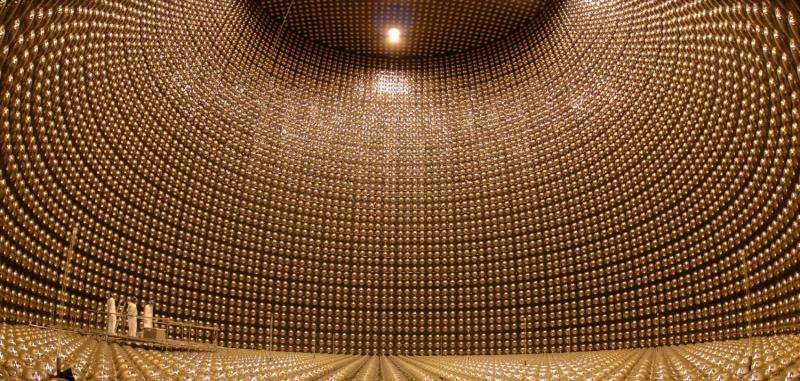Reaching out to stars beyond our galaxy

An international team of researchers in Japan is getting ready to power up a 50,000-ton neutrino detector by adding a single metal, which will turn it into the world's first detector capable of analysing exploding stars beyond the immediate neighbourhood of the Milky Way.
Neutrinos are relics from supernovae, or exploding stars. They are so tiny and interact so weakly that every second, trillions of them manage to pass through human bodies without anyone noticing. Studying them can reveal details about how stars in the universe, like our sun, work.
The problem is that all supernova neutrinos that have been detected to-date have come from the immediate vicinity of our galaxy. No one knows whether neutrinos from older galaxies far outside ours act the same way as neutrinos close to Earth, or whether there is a completely new class of tiny particles yet to be discovered.
Experimental physicist Mark Vagins of the Kavli Institute for the Physics and Mathematics of the Universe and Ohio State University theorist John Beacom wanted to see if it were possible to improve Japan's largest neutrino detector, Super-Kamiokande. One of their ideas was to add the rare-earth metal gadolinium to the detector's water tank, taking advantage of the gadolinium nuclei's ability to capture neutrons. If a neutron released from a neutrino interaction were nearby, it would be absorbed by the gadolinium, which would release the extra energy by creating a flash of light: a signal that could be detected by the equipment. But before any tests could be run, the two researchers needed to find out if their idea made scientific sense and predict what complications they might need to overcome.
First, water inside the detector would need to be transparent. Neutrinos interact with water, creating tiny flashes of light that are picked up by the photomultiplier tubes lining the walls of the tank. If gadolinium made the water murky, it would prevent the phototubes from detecting any light.
Second, the gadolinium needed to be uniformly spread within the tank so it could be close enough to a neutrino-water interaction to magnify its signal.
"These two criteria, uniformity and transparency, mean the gadolinium must be induced to dissolve," says Dr Vagins. "We've spent over ten years figuring out how to do it."
In July 2015, Dr Vagins announced at an international conference in Tokyo that he had developed the necessary technology and will now start plans to enrich Super-Kamiokande with gadolinium.
Gadolinium is a by-product of the extraction of other rare earth metals, some of which are used to produce the colours in flat-screen TVs. This makes gadolinium affordable so that Dr Vagins and his team will be able to purchase the 100 tons needed to help Super-Kamiokande detect neutrinos from distant supernovae.
Super-Kamiokande is a gigantic detector located one kilometre beneath Mount Ikenoyama, inside an old mining tunnel in Kamioka, central Japan. The pure water inside the giant 50,000-ton tank acts as a target for a range of particles being studied today including neutrinos, leftover particles from supernovae, resulting in a tiny light flash that is picked up by sensitive phototubes lining the walls. In 1987, Kamiokande, the original experiment in the same mine, recorded the first supernova neutrinos. The experiment was headed by University of Tokyo special university professor emeritus Masatoshi Koshiba, who was awarded a Nobel Prize in Physics in 2002. In 1998, Kamiokande and Super-Kamiokande proved neutrinos have mass, resulting in the 2015 Nobel Prize in Physics for Takaaki Kajita, who had been a graduate student of Dr Koshiba.
Provided by ResearchSEA



















